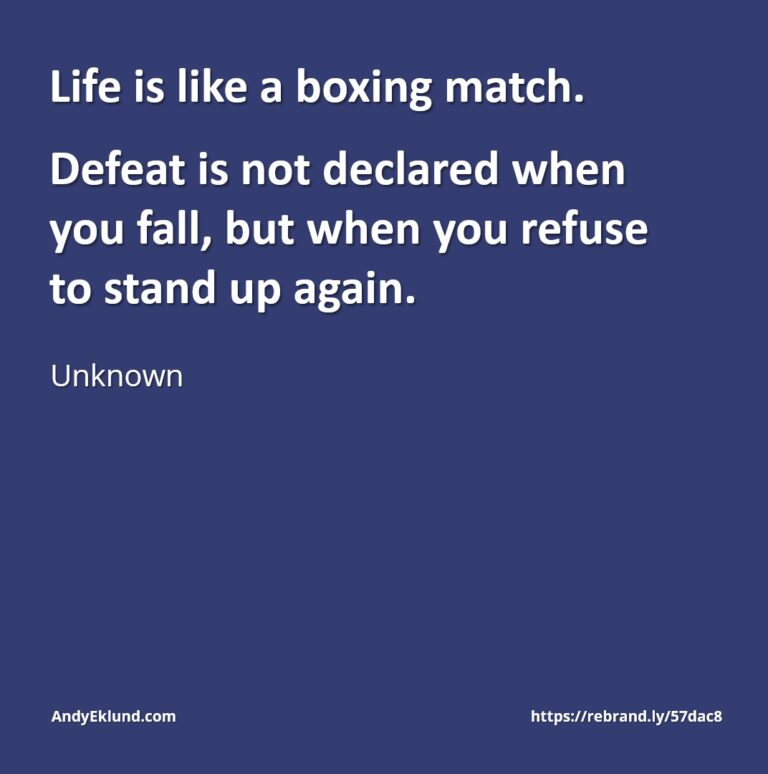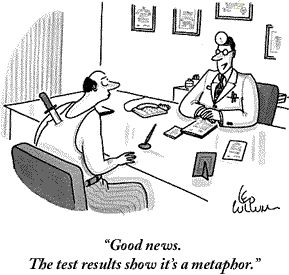Waaaaaay back in 2006 when I started the first iteration of this website, I opened with a question about comparing the Sydney Harbour Bridge to the wire coat hanger. That – and metaphors generally – show how they are one of the most common and useful ways people create ideas.
I love a definition, so let’s start with:
A metaphor compares an existing problem with another, unrelated or dissimilar problem, object or situation.
The word originates from the Greek word metaphorá, meaning to transfer, to carry over.
No less than Aristotle recognized the value of metaphors some 2,500 years ago.
“The greatest thing by far is to be a master of metaphor,” he wrote in Poetics, then adding, “For to make good metaphors implies an eye for resemblance.”
Later on, he paraphrased himself: “The successful use of metaphor is a matter of perceiving similarities.”
Metaphors Help Creative Problem Solving
By reframing a problem (or the situation of the problem), a metaphor help creative thinking in three different ways.
By identifying similarities between two disparate problems. In doing so, new insights emerge, and can potentially be translated into new ideas to solve the original problem.
By examining the old problem in a new context. A new or different perspective might reveal unusual approaches or potential alternatives to solve the original problem.
By looking elsewhere for answers, particularly outside one’s existing body of knowledge as well as one’s comfort zone. As we distance ourselves from our current situation, we give ourselves freedom and clarity to question our assumptions or stereotypes. By breaking these biases, we often can see new solutions to solve the original problem.
William J.J. Gordon formalized the metaphor process during the 1950s as Synectics when he learnt through his research that people often solved problems creatively when they expressed the issue or need as a metaphor.
Here’s a brief 2023 overview of the generalised 8-step process of Synectics from ScienceDirect.
They Make the Complex Simple
Metaphors help make sense of the unfamiliar by comparing it to something understandable. As an example, the technology industry in its infancy used metaphors to explain complex new products or services to its customers, such as the mouse, a desktop, Windows or Facebook..
If your own situation or problem is complex, you might use this technique of radical simplification when you next brainstorm. Pretend you’re talking to as child, a novice or an alien. What metaphors would you use to reduce down the intricacies of your business problem or process into something easy to understand?
As an example, our team was asked to help promote a specialized cardiovascular heart treatment drug. In the brainstorm, we identified the problem: Doctors were overwhelmed with so much information about cardiovascular myths that it was often difficult and time-consuming to develop a proper diagnosis. Our metaphor: The problem was like reading a complex map when you didn’t know where you are.
Building on this ‘atlas’ concept, we brought out different types of road maps and began picking out common attributes and features, such as the legend, location icons and road patterns. One person eventually offered up traffic arteries, which of course ‘arteries’ connected us back full circle to our cardiovascular topic. The visual imagery became our anchor for the theme, messages and design, making the campaign memorable among our key audience: cardiologists.
Metaphors make the familiar strange
Remember when you may have seen something that you’ve taken for granted in an entirely new light?
By looking at the familiar with new eyes, you might realize you’d been blinded to the obvious, or forgotten an essential element, or discovered something entirely fresh.
That’s the key to using a metaphor. You want it to change your viewpoint to gain a new appreciation or a new insight.
Another example, we were looking for ways to internally communicate cultural changes to a newly merged organization. The problem: Employees were bombarded with too much information (much of it gossip) and therefore believed everything and anything.
Our metaphor: The problem is like having too many talk shows. Building on this ‘conversation’ concept, we gathered information on leading current and past talk shows, both in Australia and other countries. By examining each show further, we found a wealth of new activities to bring focus to our internal communications campaign, even going to the point of creating and filming our own talk show, using employees as both hosts and guests to be the definitive source for truthful information on the merger.
Another way to make the familiar strange is to break from perceived assumptions about a specific situation or environment by forcing you into multiplicity. That’s a fancy way of saying to look at a problem from many points of view, not just one. When you encourage multiple options, you encourage multiple answers.
More thoughts on brainstorming suggestions? How to Use Metaphors to Inspire Creative Thinking.
Have you ever tried using metaphors in brainstorming? What’s worked for you? Please feel free to add your thoughts and comments below.



6 Comments
I find metaphors very helpful in brainstorming, particularly when I can get people to incorporate them into personal stories. I like your idea of using visual metaphors, so next time I’ll try to do all three at the same time. Many thanks for a lovely article.
I don’t get the picture.
“Time is money,” one of the most commonly used metaphors in every-day English. 🙂
Getting the mind to work in multiple ways, as you say through visual and metaphorical thinking, can only improve creative thinking. I’d very much like to hear how your storytelling goes! Thanks for your comment.
Here is one of my favorite books as well as metaphors. I Is An Other written by best selling author, James Geary. I count myself lucky to have opportunities to hang out with him.
Yes, it’s a great book! Here’s a link: http://www.goodreads.com/book/show/10385841-i-is-an-other